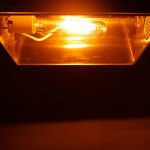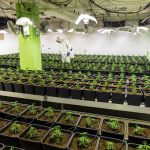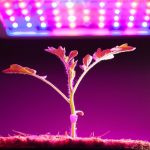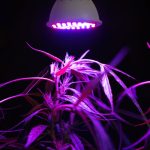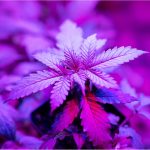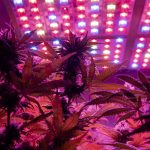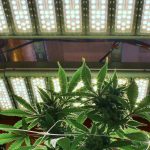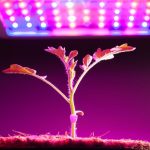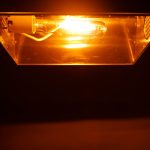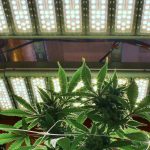Grow lights are essential for indoor gardening and growing plants, but they also produce heat. This can be a good thing if you need to warm up your plants, but too much heat can be damaging. So which grow lights produce the most heat?
In this article, we’ll look at how much heat different types of grow lights generate so that you can make an informed decision about your indoor gardening setup.
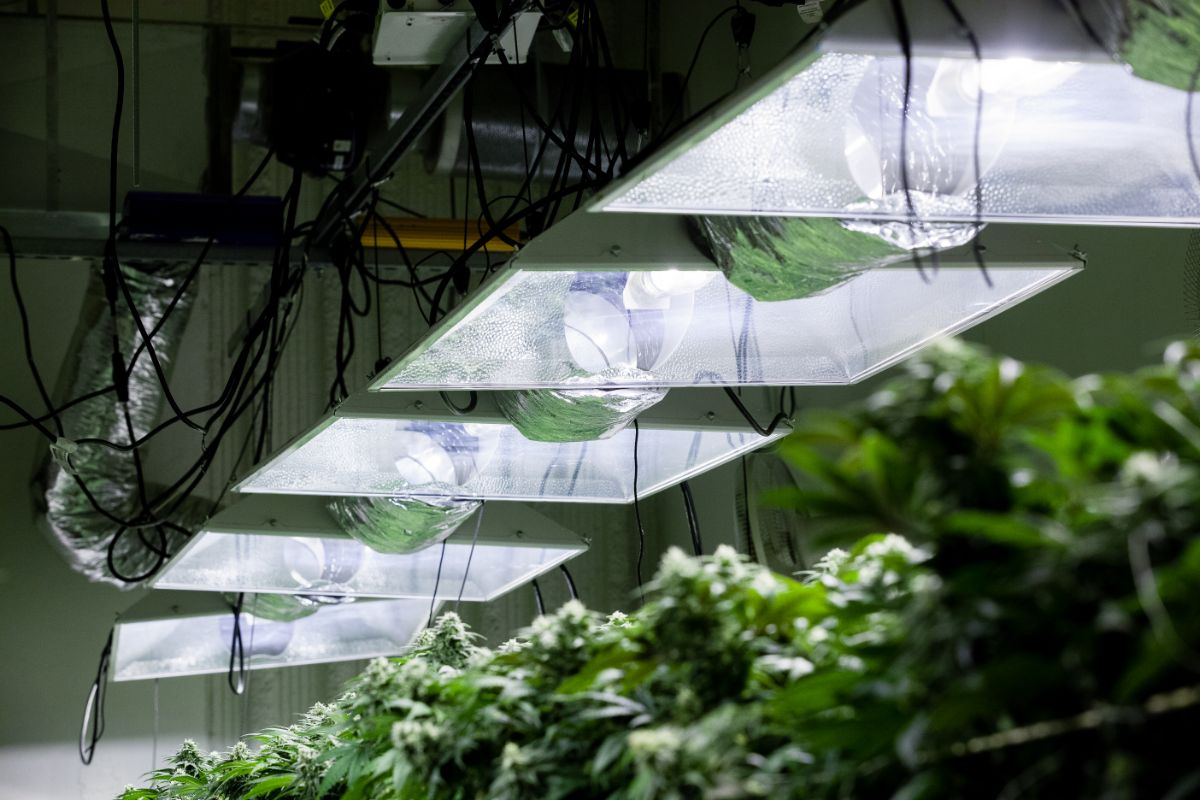
How Much Heat Do Grow Lamps Generate?
High-intensity discharge (HID) lamps are some of the best grow lights when it comes to producing heat.
These consist of metal halide and high-pressure sodium lamps, and they are great at producing light that is ideal for plant growth – while also emitting enough energy in the form of heat.
HID grow lights can produce a lot more light per watt than traditional incandescent bulbs, meaning they are not only more efficient but also generate up to 10 times more heat than alternatives like LED lights.
Metal Halide
Metal Halide lamps are some of the most powerful lighting systems available in a grow room.
Although they produce a good amount of light and are incredibly efficient, metal halide lamps also produce intense amounts of heat. This heat can range from comfortable warmth to scorching hot temperatures.
Some fixtures can reach up to 2,000 Fahrenheit, so working around them requires careful planning.
When setting up metal halide lights in a confined space, it is important to consider how to properly manage the added heat.
High-Pressure Sodium
High-Pressure Sodium (HPS) lamps are a type of gas-discharge lamp used for growing plants indoors. They emit a yellow-orange light, which is useful for stimulating flowering and fruiting in plants.
A key feature of HPS lamps is their intense heat output. Although HPS does not produce quite as much heat as metal halide lamps, they still generate considerable amounts of heat, making them unsuitable for small spaces such as grow tents or other enclosed areas with limited ventilation.
Is A Grow Light A Heat Lamp?
Heat lamps are an electronic source of light that produces infrared radiation to heat the air. It can be used to stimulate growth in plants.
The operation of a heat lamp involves the conversion of electricity into both light and heat, which is accomplished by the heated white-hot filament contained within the bulb.
Typically more efficient than 100-watt incandescent bulbs, heat lamps are available in wattages up to 250 watts and provide a concentrated source of energy that radiates outward in all directions.
Heat lamps might seem like a logical choice when looking for a way to grow plants, but they aren’t actually ideal for the job.
On the other hand, grow lights are specifically tailored toward this purpose. Not only do they shine a vibrant ultraviolet which is much more suited to photosynthesis, but there are even green and yellow wavelengths being emitted too so that it simulates natural sunlight as closely as possible.
Can Grow Lights Heat A Greenhouse?
Grow lights are an essential part of greenhouses. Without grow lights, it would be hard to impossible for plant life to thrive in greenhouses as they don’t possess a natural light source.
Real sunlight provides the spectrum of colors plants need to survive and carries with it the energy needed for them to grow their best.
An artificial light source must provide similar conditions of color spectrums and plenty of energy if the greenhouse can not get direct real sunlight.
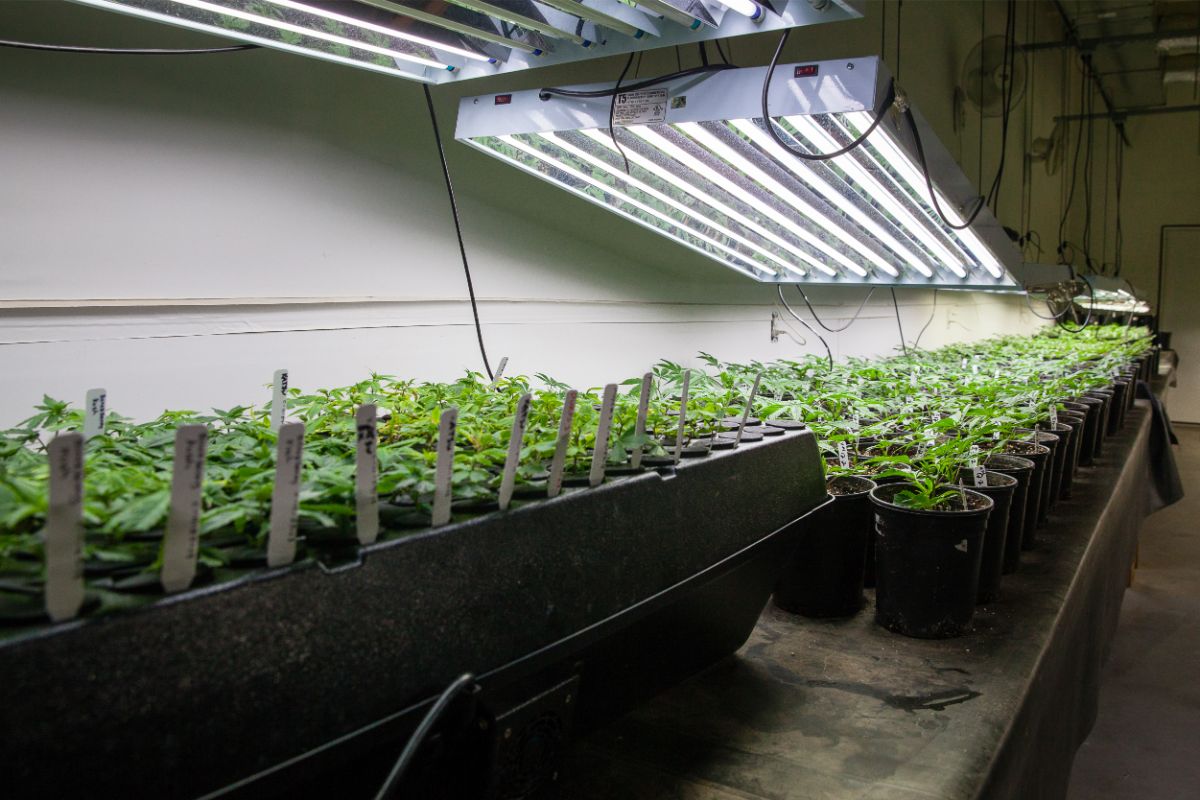
Why Is It Important For Grow Lights To Heat A Greenhouse?
The different bands within this spectrum that promotes photosynthesis can only be found within a grow light or from real sunshine, which makes these types of lighting fixtures an invaluable resource in any greenhouse situation.
Greenlight is also important, as while it may not directly help with photosynthesis like red and blue do, it helps penetrate deeper into leaf tissues and helps reach areas where other colors cannot go.
Ultimately, grow lights are essential for providing the wavelength energies and depth coverage necessary for the adequate growth of plants in a greenhouse environment.
What Grow Lights Don’t Produce Heat?
When it comes to choosing the right grow lights, there are several options that produce far less heat than the models which emit a lot of heat.
LED and fluorescent bulbs are two examples of grow lights that generate less heat, but still enough to require additional measures such as an exhaust system to ensure proper ventilation.
Fluorescent
Fluorescent lighting is a great option for small grows, as it produces far less heat than traditional grow lights.
Although these lamps get extremely hot, they are much less powerful and so unless you have a larger grow space the heat will not be noticeable.
However, if you were to use fluorescent bulbs for a large home setup, your plants would suffer as output per bulb is low and the number of bulbs required to create sufficient light output causes an insane amount of heat.
This means that large grow operations don’t use fluorescent lighting for their flowering time.
LED
LED fixtures are becoming increasingly popular among indoor plant growers due to their impressive energy efficiency and low heat output.
Unlike incandescent lamps, LEDs generate light without a heat event. Instead, the electricity is almost entirely converted into visible light. This means that no matter how much power is needed, LEDs stay far cooler than other grow lights used for indoor gardening.
In fact, they produce the least amount of heat of any popular grow light solution available today.
Final Thoughts
In summary, do grow lights produce heat? Yes, some grow lights such as metal halide and high-pressure sodium produce a lot of heat.
The amount of heat produced by fluorescent and LED grow lights is much less compared to MH and HPS fixtures. When setting up a grow light system, it is important to consider the amount of heat that each fixture will generate in order to ensure proper ventilation and cooling.
Frequently Asked Questions
A responsible step in preventing this kind of heat damage is making sure that your plants are adequately watered at all times.
Adding mulch around them can also help keep temperatures more regulated, as it blocks out direct sunlight while still allowing air circulation and additional water absorbency.
Most importantly, be proactive with keeping an eye on the temperature conditions in your garden area so that you can take action promptly should your plants start exhibiting signs of heat stress.
- 5 Best Weed T-Shirts For Women - June 26, 2023
- What Is Stoner Girl Clothing? All You Need To Know - June 26, 2023
- What To Wear To A Cannabis Café: 10 Awesome Options - June 26, 2023

